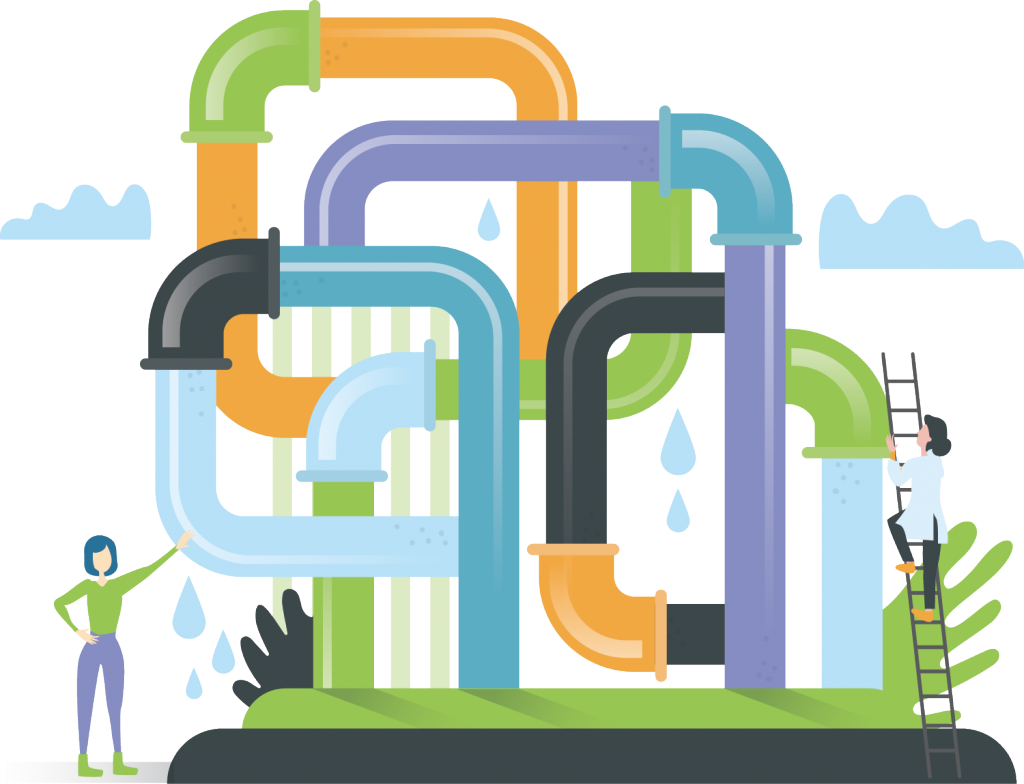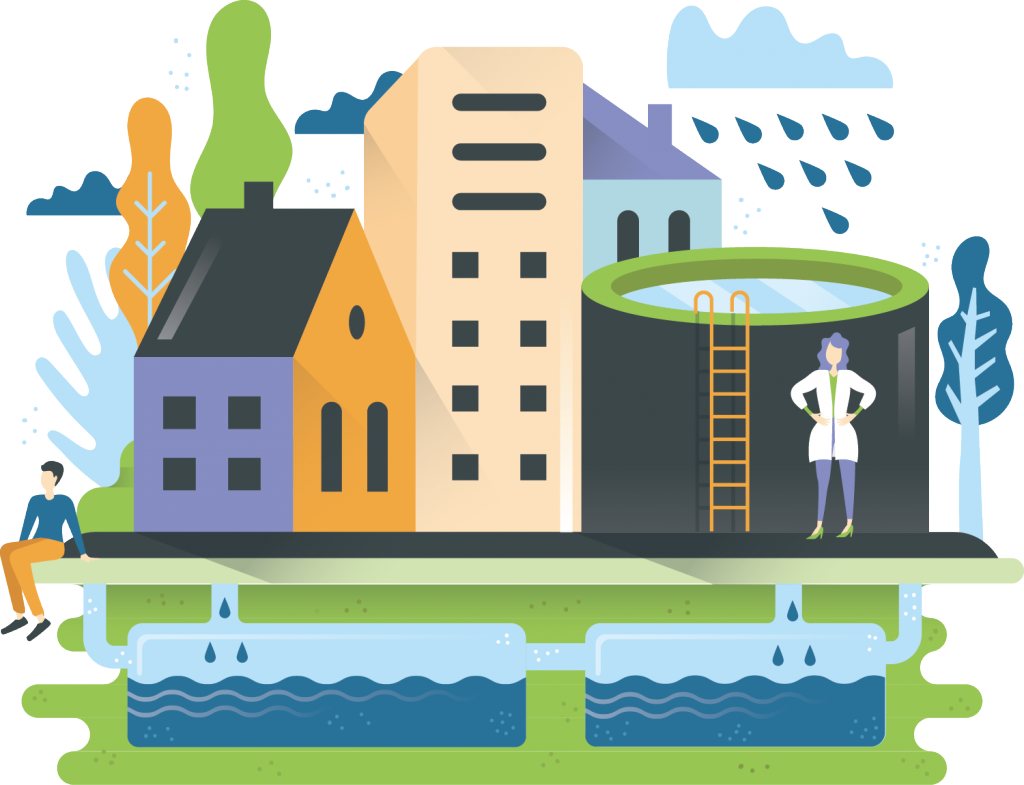Energy requirements resulting from end users’ use of water are the most important of the entire urban water cycle, representing 60 to 90% of all energy requirements from hot water heating. End users drive the volume requirements of all other stages through their water demand, which varies from city to city between 70 and 450 L/pers.day.
Energy requirements and GHG emissions can be affected by some of the other stages in the urban water cycle, as noted on the left side column. However, other factors can impact water consumption, energy and GHG emissions. These other factors include the following:
- Energy source for heating hot water (renewable, fossil fuels, grid energy mix).
- Water requirements for yard irrigation and heat island mitigation (Impacts of Climate Change in terms of rainfall and temperature).
- Price and availability of onsite/ in-house water reuse, rainwater harvesting, green roof technologies, and heat exchangers on hot wastewater flows.
- Water loss in end user piping.
- Public outreach and incentives from water and energy utilities and cities.
Ultimately what will drive end users to use water more efficiently and minimize their impact on the whole urban water cycle is awareness and outreach by water and energy utilities and by cities. Water utilities can inform the public on responsible behaviors that impact the sustainability of the city’s urban water management such as the use of water conservation fixtures, rainwater for irrigation and other purposes, water reuse, the installation of green roofs, and also the benefits of drinking tap water rather than bottled water. Energy companies can promote solar hot water heating and low energy technologies for hot water heating. Cities can incentivize the installation of green roofs or infiltration wells that minimize the impacts of rainwater on urban water management, as well as enhance the messages from the water and energy utilities.
| Impacted by: | Impacts: |
|---|---|
| Water Abstraction The volume of water abstraction is driven by the demand of end users and how efficient they are in their water use. | Water Abstraction End users could be inclined to reduce their water usage if they knew the water came from a limited source (water scarcity). |
| Drinking Water Treatment Excessive water usage by End Users increases the volume treated and therefore the energy requirements. | Wastewater Collection The type of collection system affects the amount of water used in the homes (dry or flush toilets, greywater separated from blackwater). |
| Drinking Water Distribution The volume of water distributed, and therefore the energy required, is driven by the demand of end users and how efficient they are in their water use. | Wastewater Treatment (Semi-)Centralized wastewater treatment may require the end users to have individual pretreatment (septic tanks or advanced pretreatment for industries), which may impact water usage and energy requirements. |
| Wastewater Collection The less water entering the collection system from end users, the less pumping energy is required (in pumped systems). However, reduced flows in the collection system network can lead to greater detention times, which can possibly result in greater methane emissions from the collection system. | Reuse Water Treatment Reuse water for usages such as irrigation, cleaning, toilet flushing or even drinking, depends on the level of treatment of the reuse water. |
| Wastewater Treatment The wastewater treatment energy depends on the volume and concentration of the water collected, as well as the total organic and nitrogen load. The energy recovery potential is proportional to the organic load. End users using excessive amounts of water may dilute the wastewater. End users using garbage disposal for organic kitchen waste will increase the concentration of the wastewater and the total organic load. | Reuse Water Distribution Access to reuse water dictates whether it is used and how much. The use of reuse water by end users offsets water consumption from the raw water source, which reduces the dependency on a potentially limited water resource and may reduces pumping and treatment energy. |
| Reuse Water Treatment Depending upon the recycled water demand (quantity and water quality) by the end users, the level of treatment required will be defined and, hence, the related energy and GHG emissions. The higher the water quality, the more energy intensive the treatment process becomes. | |
| Reuse Water Distribution The reuse water demand by end users and their location compared to the treatment facility dictate the volumes to be distributed over which distance and the associated pumping or truck delivery requirements. |

